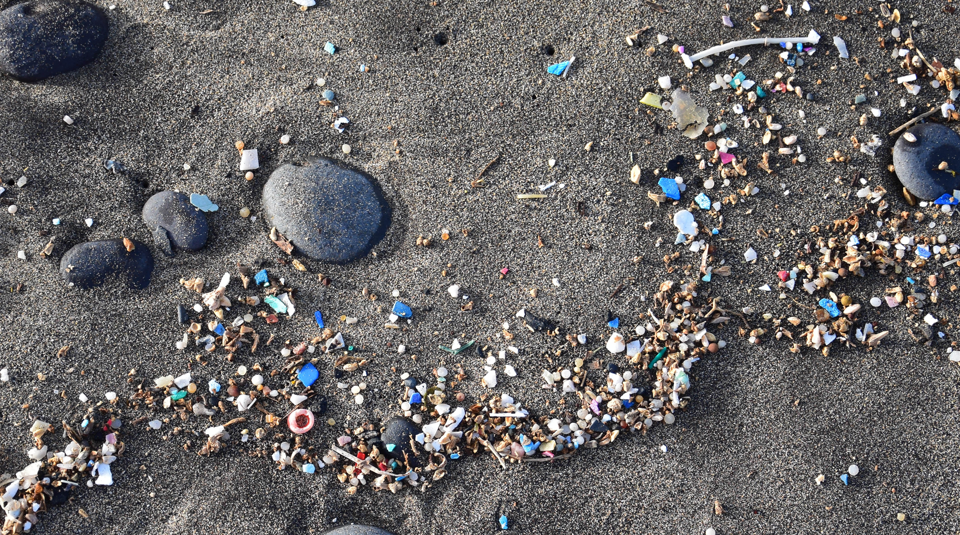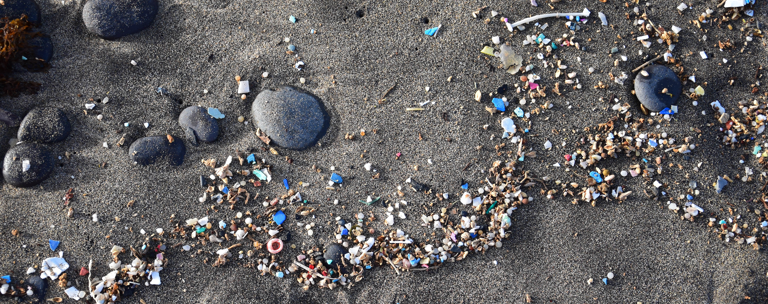It’s time to pay attention to the level of plastics, both large and small in our environment. If we want to mitigate against the human and environmental health and economic impacts in Aotearoa New Zealand, and globally, we need to act now.
This is the message from Dr Olga Pantos of the Institute of Environmental Science and Research (ESR) and Dr Grant Northcott of Northcott Research Consultants, co-leads of AIM2 – Aotearoa Impacts and Mitigations of Microplastics, a five-year Ministry of Business, Innovation and Employment (MBIE) Endeavour Funded project which concluded in March of this year.
The study was the first of its kind to be carried out in New Zealand, looking at how widespread microplastic pollution is in our environments, and examining the diverse risks this poses. This Friday (17 May) experts from the transdisciplinary AIM2 research team, representing six organisations across the motu, are meeting in Wellington to share their findings.
Presenters at the symposium will cover areas including social and cultural considerations, microplastics levels, characterisation, distribution, flow and fate of microplastics, and interactions with microbial communities. They will also discuss marine species of biosecurity concern, fate and impact of associated chemicals, and changes to plastic itself in the New Zealand environment.
The research will paint a picture of microplastics permeating our environment, with the potential for wide-reaching impacts. For example, one area of work focused on determination of the levels and types of microplastics in coastal marine environments. Including, sea surface water surveys in in Fiordland, and between Auckland and the Bay of Islands in Northland. While the location of AIM2 sampling has varied, what has remained consistent is the presence of microplastic.
“It didn’t matter whether we were in populated areas like Waitematā Harbour or uninhabited fiords of the deep South, there was no location that was free of microplastics,” says Dr Pantos. “It’s not just our health that is at risk from microplastic pollution, but the health and function of the ecosystems that significant parts of the economy are reliant upon are also affected. These ecosystems need to be healthy to be able to support food production.”
Dr Pantos says it was a blow each time the study identified microplastics, although it wasn’t a surprise to find them. It’s the very small nature of microplastics that makes them such a problem, because they can permeate throughout the environment and disperse over wide areas. Overseas studies have even identified microplastics in the tissues of all human organs so far tested, including lung, brain and placenta.
“One of the simplest things we can do that will have the biggest impact on reducing plastic pollution is to reduce the amount we are using. The impacts of plastics occur across the full life cycle. By not using something you remove that risk all the way along. There’s lots of non-essential plastic items out there which are really easy to do without. We’re just conditioned to believe we need them,” she says.
“We have seen from the work carried out by the AIM2 project that New Zealand is not immune from large and small plastic pollution, and is therefore subject to the risks it poses. With the unique environments and organisms it is important that we continue researching this persistent and pervasive pollutant within the New Zealand context. This will benefit everybody and all ecosystems at many levels, from ensuring safe drinking water to protecting market access of food exports and reduce impact upon taonga species.”
About AIM2
AIM2 (Aotearoa Impacts and Mitigations of Microplastics) began in 2018 when ESR received MBIE Endeavour Research Programme funding to lead a five-year study looking at the state of microplastics pollution and the potential threats it poses New Zealand's unique flora and fauna, ecosystem as well as people and the economy. The project has involved researchers from six science and research organisations, supporting 12 PhD and seven Masters’ students in areas of research from social science to microbiology.
To arrange an interview with Dr Olga Pantos, please contact media@esr.cri.nz

